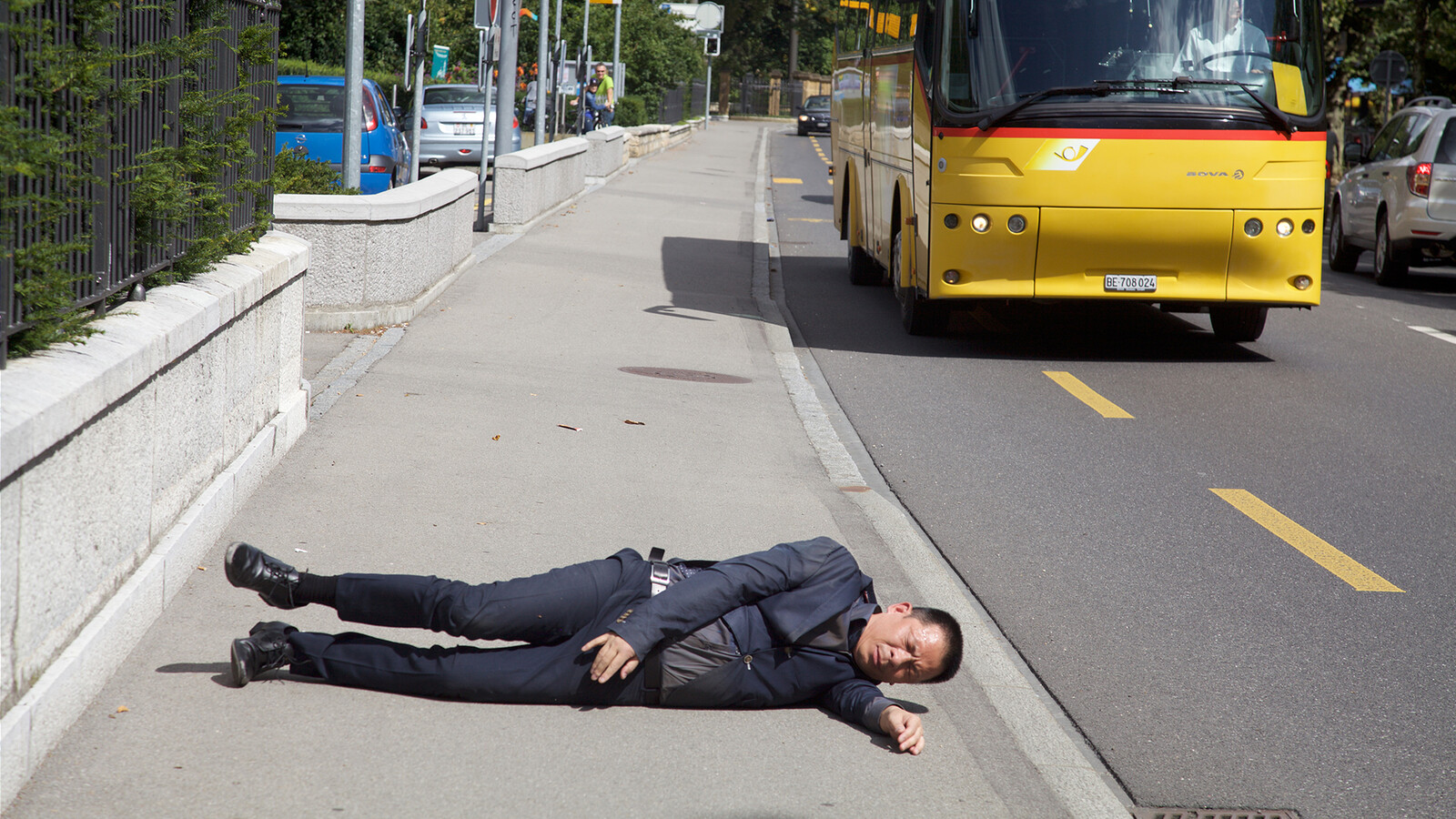December 7, 2018–April 28, 2019
Via Guido Reni, 4/a
00196 Roma Italy
Italy
Hours: Tuesday–Sunday 11am–7pm
T +39 06 32486
press@fondazionemaxxi.it
More than 140 artists and over 200 works to compose the multicultural, polyglot, colorful, scary, stimulating, deafening story of the streets of the whole world, the real great laboratory for discussion, creation, comparison, where the contemporary era is invented
They took to the streets with invasions, surprises, disturbances, break-ins, rebellions; they have involved people, communities, have offered new points of view. Starting in the 1960s, it was the artists who believed that the road was the modern intellectual, social and political battlefield. MAXXI dedicates to them all, but also to architects, urban planners, and designers, THE STREET. Where the world is made. The exhibit is curated by Hou Hanru together with the curatorial and research teams of the museum and transforms MAXXI into an intense and somewhat chaotic street scene.
More than 200 works from more than 140 artists to describe a space that is not only a fundamental manmade infrastructure, but a place crossed by multiple meanings, sometimes victim of visual and physical bombardment—signs, advertising, surveillance cameras, garbage—a place where shared practices and new technologies are experimented, and a showcase of projects stemming from the needs of the communities.
The main partner is Enel, the Fondazione MAXXI’s first private partner, which has chosen to support this exhibition in particular due to its extraordinary cultural and research value, offering free admittance to a programme of seminars with architects, journalist, philosophers and artists.
With THE STREET, MAXXI becomes a street-museum, capable of combining works, actions, events and artistic, architectural, urban and technological research, conceived by an international creative community, expanding the study already conducted in 2017 for the Bi-City Biennale of Urbanism/Architecture of Shenzhen with which the MAXXI team collaborated, on the most outstanding artistic experiences, that have reinterpreted the functions and identities of the street from the last two decades. The museum becomes a spokesperson for a reflection on the future of urban life and civil society, and on the function of artistic and cultural institutions.
Site-specific projects, performance, and transdisciplinary events are part of an exhibition organised based on themes—STREET POLITICS, GOOD DESIGN, COMMUNITY, EVERYDAY LIFE, INTERVENTIONS, THE OPEN INSTITUTIONS, MAPPING—fundamental for understanding the new functions and identity of the modern-day street. Starting from the belief that this space is the place where the world is created, it is analysed as a manifesto of contemporary life, a scenario, and a privileged point of view, a landscape in which the creative community and citizens give life to a new community and a new world of urban creativity.
The exhibition includes works by artist such as Allora & Calzadilla, Francis Alys, Rosa Barba, Yael Bartana, Boa Mistura, Martin Creed, Jonathas de Andrade, Chto Delat, Sam Durant, Jimmie Durham, Flavio Favelli, Cao Fei, Kendell Geers, David Hammons, Thomas Hirschhorn, Hiwa K, Kimsooja, Cinthia Marcelle, Pedro Reyes, Moe Sat, Marinella Senatore, Raphaël Zarka, Zhao Zhao and many others.
A video review accompanies the exhibition in the museum’s video gallery and a cycle of talks, also provides a series of artistic interventions outside the museum and a calendar of performances commissioned for the occasion, all with free admission. A specific site work by Barbara Kruger and the works Ai nati oggi by Alberto Garutti, Untitled (Green Woman on the Traffic Light) by Anna Scalfi, Don’t Miss a Sec’. by Monica Bonvicini and Chiaroscuro by Alfredo Jaar are added to Liu Qingyuan’s newly produced images like wood-block prints, that recounts a narrative of historical artistic interventions in the global art history from 1960 to 2000. The performances will be held for the entire duration of the exhibit: Jeremy Deller starts with How to Leave Facebook in which thousands of posters/flyers will be distributed in various areas of Rome, from the Testaccio market to the Colonna Gallery explaining how to protect the privacy on Facebook profile. In March, Lin Yilin presents the new performance The back (working title) designed for the exhibit, while in April the group OHT presents Little Fun Palace, a caravan that will occupy the streets of the Quarticciolo and Tor Tre Testa neighbourhoods, hosting meetings and debates open to the public.
The exhibit is accompanied by a catalogue-book edited by Hou Hanru and the MAXXI curatorial and research team, published by Quodlibet, a mini-encyclopaedia that explores the subject of the street, with Book 1 designed as an introductory manual and anthology, and Book 2 composed as “visual” books dedicated to the seven themes addressed by the exhibition.


